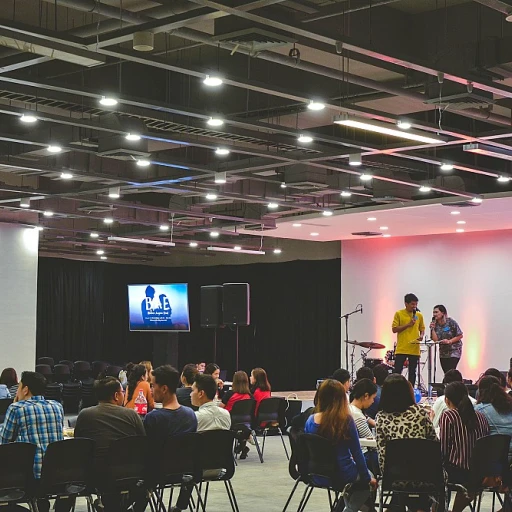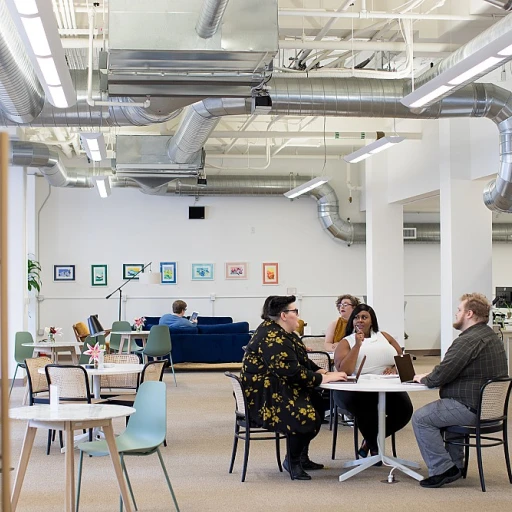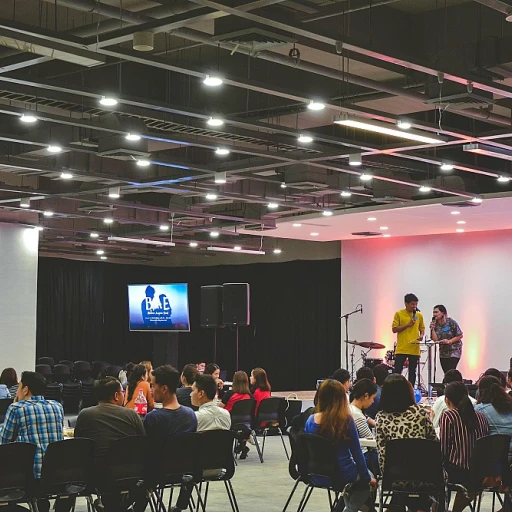
The Role of Organizational Culture in Shaping Workplace Dynamics
How Culture Shapes Workforce Dynamics
In the realm of organizational behavior, understanding how culture molds workplace dynamics is pivotal. Organizations serve as the backbone for setting the tone of how interactions unfold, influencing everything from decision making to conflict resolution. Organizational culture plays a significant role in steering employee behavior and attitudes. When employees feel aligned with the cultural values of their workplace, it fosters a sense of belonging and heightens employee engagement.
Each organization’s culture acts like a guiding star, illuminating the paths employees take within the workplace. It influences not only the work environment but also how employees align with the company’s goals. This alignment is crucial, as it nurtures an atmosphere where individuals feel invested in their roles, boosting overall organizational performance.
Diverse workplace dynamics often emerge based on the unique cultural landscapes within companies. A culture that embraces inclusivity and diversity can significantly enhance team collaboration and innovation. Similarly, a lack of cultural awareness can lead to misunderstandings and hinder the growth of a cohesive team.
What companies and management can do is cultivate a culture that not only attracts talent but also retains it. This is where the synergy between culture and leadership becomes apparent, as leadership styles can either harmonize or disrupt the workforce dynamics. For more insights into how organizations can cultivate such a high-performance culture, consider exploring the impact of cultural cultivation in modern workplaces.
An understanding of organizational culture also aids in addressing behavioral organizational challenges. By leveraging data analytics and employee feedback, companies can measure job satisfaction, refine their strategies, and ultimately create a thriving work environment.
Leadership Styles and Their Influence on Employee Engagement
The Interplay of Leadership and Employee Engagement
Leadership plays a crucial role within organizations when it comes to understanding workplace dynamics. The styles of those in managerial and supervisory positions can dramatically affect how employees interact and engage with their work environment. Different leadership styles, such as transformational and transactional, can significantly influence employee engagement levels by shaping the organization's culture and communication patterns. A transformative leader inspires and motivates employees to exceed their own expectations, creating a high level of employee satisfaction and boosting overall job satisfaction. They focus on creating an inclusive work environment that embraces organizational behavior principles centered around empowerment and support. On the other hand, transactional leaders rely on structured rewards and penalties, which can be effective in certain situations but may not always foster long-term employee well-being. Leadership impacts the behavior organizational outcomes, making it a critical factor in cultivating an effective decision making process. Employees feel more valued and are more likely to engage when they perceive their leaders as supportive and understanding of their individual and team needs. This sense of support enhances employee engagement and drives workforce dynamics towards positive organizational performance. Conflict resolution is another critical area influenced by leadership styles. Effective leaders promote open lines of communication and actively listen to their teams, which can reduce workplace tensions and foster better collaboration. A leadership that values diversity and inclusion can cultivate a culture that thrives on diversity of thought, which aligns with human resources strategies aimed at leveraging organizational culture for enhanced work dynamics. To further explore strategies for improving leadership's impact on employee engagement, organizations can benefit from internal branding practices. These practices not only enhance company culture but also contribute to creating a cohesive understanding of organizational goals among employees. For more insights, you may visit this page on enhancing company culture through internal branding.Communication Patterns and Their Effect on Team Collaboration
Effective Communication for Enhanced Team Collaboration
In today's fast-paced work environment, understanding the role of communication is essential for fostering effective collaboration among teams. Organizations are increasingly recognizing the impact of clear communication patterns on organizational behavior and workplace dynamics.
Teams that prioritize open and transparent communication not only improve their internal dynamics but also enhance individual employee engagement. This, in turn, contributes to better organizational performance and workforce dynamics. Consistent communication provides employees with a sense of belonging, making them feel valued within the organization. As a result, they are more likely to be proactive and contribute positively to the overall productivity and success of the company.
Many companies have adopted strategies to bolster communication among team members by implementing regular team meetings, utilizing collaboration tools, and fostering an open-door management policy. By focusing on constructive dialogue and active listening, organizations can effectively resolve conflicts and improve decision making processes, ultimately leading to higher employee satisfaction and job satisfaction.
Moreover, leveraging technology such as data analytics and machine learning can further enhance these communication efforts by providing insights into employee behavior and preferences. This data-driven approach allows for more personalized and effective communication strategies to be developed, further strengthening team collaboration.
Companies aiming to improve their communication patterns can explore how to enhance the employee experience with partner benefits, ensuring that initiatives resonate with the workforce and align with the organization's culture and values.
The Importance of Diversity and Inclusion in Modern Workplaces
Diversity and Inclusion as Pillars of Employee Motivation
In today's dynamic organizational environments, fostering diversity and inclusion is more critical than ever. Companies are increasingly recognizing that a diverse workforce fuels innovation and enhances overall organizational performance. When a workplace embodies a variety of perspectives, it enriches decision making and promotes creativity. The interplay between diversity and workplace dynamics is profound. Organizations that prioritize inclusivity often notice a positive shift in employee behavior. People from varied backgrounds bring unique experiences and ideas, contributing to a dynamic culture where everyone feels valued. This not only improves employee engagement but also enhances job satisfaction and retention. Moreover, understanding human behavior within diverse teams enables better conflict resolution. When companies embrace cultural differences, they create an atmosphere of respect and collaboration. Employees are more likely to express themselves without fear of bias or discrimination, boosting morale and productivity. Implementing inclusive policies isn't just about checking boxes; it's about genuinely integrating diverse individuals into the fabric of the company. Human resources play a crucial role in ensuring that diversity initiatives align with the organization's goals. By utilizing data analytics, companies can measure the impact of these initiatives on workplace dynamics and address any gaps effectively. Inclusion fosters a sense of belonging, making employees feel part of a supportive community. This, in turn, translates to enhanced employee engagement and reduced turnover, ultimately benefiting the company's bottom line. As organizations continue to evolve, embracing diversity and inclusion is not just a trend; it's a strategic move toward sustainable success.Adapting to Remote Work: Challenges and Opportunities
Emerging Trends and Transitioning Workspaces
The rapid evolution of technology and the modern organization has significantly impacted workplace dynamics, particularly in the adaptation to remote work settings. Companies are increasingly leveraging organizational behavior understanding to create flexible environments that cater to the diverse needs of their workforce. The global shift towards remote work has transformed traditional organizational culture, demanding a reevaluation of management strategies and leadership styles.
Remote work poses unique challenges and opportunities for employee engagement and organizational performance. Companies must strategically balance freedom and accountability to ensure employees feel connected and empowered. This involves implementing effective communication patterns that promote team collaboration and ensuring that management leads with empathy and clarity.
- Communication & Management: Establishing clear boundaries and regular check-ins is essential for maintaining productivity and fostering a sense of community. Leadership must adapt and become proactive in engaging employees in decision-making processes to maintain a cohesive work environment.
- Diversity & Inclusion: Organizations should emphasize an inclusive culture that encourages diverse perspectives. This enhances the chances of innovative outcomes as team dynamics become more complex in remote settings.
- Defining Company Culture Remotely: Organizational behavior and culture need to be redefined to accommodate both in-person and virtual interactions, ensuring that individual team members and the entire workforce remain engaged and aligned with the company's mission.
Data analytics and understanding organizational behavior are vital in assessing the impact of remote work on employee satisfaction and overall company performance. Implementing tools that assess job satisfaction and employee engagement can provide valuable insights for human resources and management to optimize work dynamics.
Incorporating behavior theories and cultural considerations, organizations can tailor their strategies to better accommodate remote work settings, ultimately enhancing both employee behavior and overall organizational outcomes.













